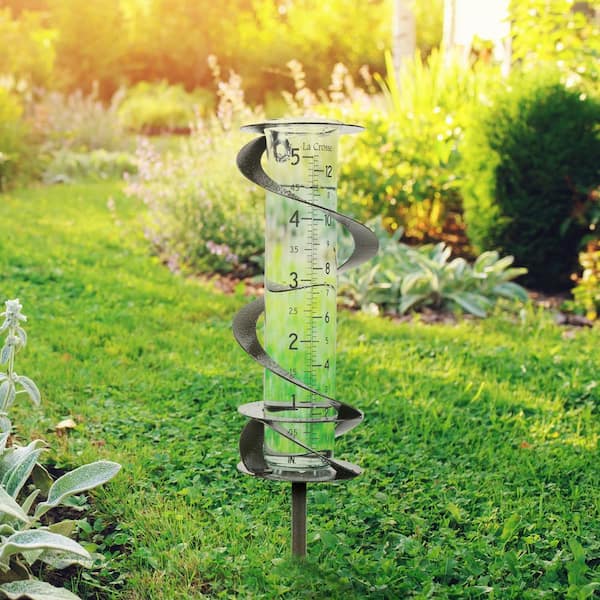Introducing the Science Behind Rain Gauges: Exactly How These Gadgets Play an Essential Duty in Environment Study and Ecological Surveillance
Rainfall gauges, apparently easy gadgets, hold a profound significance in the realm of environment research study and ecological tracking. As we peel back the layers of this scientific shroud surrounding rainfall gauges, we discover a world where precision, data accuracy, and meticulous observation merge to reveal a deeper understanding of our changing environment and its effect on the planet.
Value of Rainfall Gauges
Rain determines play a vital duty in surveillance and gauging rainfall levels, offering necessary data for environment research study and evaluation. These tools are essential in quantifying the amount of rains that happens in a specific location over a certain duration. By accumulating and gauging rain, rain gauges deal important understandings right into the circulation and strength of precipitation, assisting meteorologists, hydrologists, and climatologists in recognizing weather condition patterns and patterns.
Among the vital factors why rain determines are important is their capability to provide local and exact information. Unlike satellite or radar-based measurements, which supply more comprehensive observations, rain gauges offer precise info details to the place where they are positioned. This localized data is essential for numerous applications, consisting of flooding forecasting, dry spell tracking, and water source management. Furthermore, long-lasting information collected from rain determines assists in examining climate change effects and patterns, contributing substantially to scientific research and decision-making processes. In significance, rainfall evaluates work as important tools in the field of weather forecasting and ecological science, playing a crucial function beforehand our understanding of weather and environment dynamics.
Sorts Of Rainfall Scales

Performance and Procedure
In the realm of environment research study and atmospheric studies, the performance of rain determines lies in their detailed functionality and specific functional mechanisms. Rainfall determines are designed to accurately gauge the quantity of precipitation that drops over a certain location during a collection duration.
The performance of rainfall determines is based on the principle of gathering and determining rainwater in a standard manner. This collected information is vital for comprehending neighborhood weather patterns, tracking long-lasting climate fads, and his response assessing ecological influences. To guarantee exact dimensions, rainfall evaluates requirement to be purposefully placed in open locations away from obstructions such as structures or trees that could disrupt the collection procedure.
The functional element of rainfall determines includes normal upkeep to stop debris build-up, calibration checks to preserve dimension precision, and data videotaping for analysis (rain gauge). In general, the capability and operation of rain gauges are necessary for gathering reputable rainfall information vital to environment research study and environmental surveillance
Role in Climate Research Study
Offered the essential relevance of exact rainfall measurements in understanding weather patterns and ecological impacts, the function of rain gauges in environment research is essential. Rainfall determines give essential information for environment study by measuring the quantity of rainfall that falls over a particular area during an offered period. This data is crucial for keeping an eye on long-lasting trends in precipitation patterns, assessing the impact of environment modification on rains circulation, and boosting climate versions.

Climate scientists use data accumulated from rain determines to examine variations in rainfall levels, recognize regional environment fads, and evaluate the performance of water resource monitoring methods. By contrasting historical rainfall information with present dimensions, scientists can detect shifts in rainfall patterns, such as changes in the frequency or intensity of rains occasions. This info is important for understanding how environment adjustment is affecting rainfall characteristics and can assist policymakers make notified decisions pertaining to adaptation and mitigation methods.
Applications in Ecological Monitoring

In flood projecting, rainfall scale information helps to track rainfall strength and circulation, enabling authorities to provide timely cautions and take required procedures to alleviate flood risks (rain gauge). Dry spell surveillance relies upon rain gauge information to examine wetness levels in the soil and track precipitation deficiencies, assisting in the identification of drought-prone locations and the execution of drought feedback strategies
Moreover, rainfall gauge information plays a crucial role in water resource management by giving information on water availability and use fads. This data is used to make educated decisions concerning water allotment, conservation actions, and sustainable water source preparation. Additionally, in farming, rain scale information helps farmers in optimizing watering Visit This Link routines, plant choice, and total farm monitoring methods based on regional rainfall patterns. Overall, rainfall gauges are crucial tools in environmental tracking, offering useful understandings that add to notified decision-making and sustainable resource monitoring.
Verdict
To conclude, rain evaluates are vital devices for gauging rainfall, providing valuable data for climate study and ecological tracking. With various types and functionalities, rainfall evaluates play a vital duty in recognizing rainfall patterns and their effect on the atmosphere. By precisely determining rainfall, these gadgets contribute to the development of clinical knowledge and assistance in making notified decisions pertaining to water source administration and disaster readiness.
Rain assesses play an indispensable role in tracking and measuring rainfall levels, supplying crucial information for climate research study published here and evaluation. The typical rain gauge, recognized as the "tipping container" gauge, is one of the most commonly made use of gadgets. Ultrasonic rainfall assesses use sound waves to identify the existence of rain, giving real-time information on rainfall levels.Environment scientists utilize information collected from rainfall determines to examine variations in rainfall levels, recognize local climate trends, and review the efficiency of water source administration strategies.In conclusion, rainfall evaluates are essential tools for gauging precipitation, giving important information for climate research study and environmental monitoring.